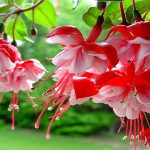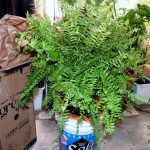This post may contain affiliate links. If you buy something from one of our links we may earn a commission. Thanks
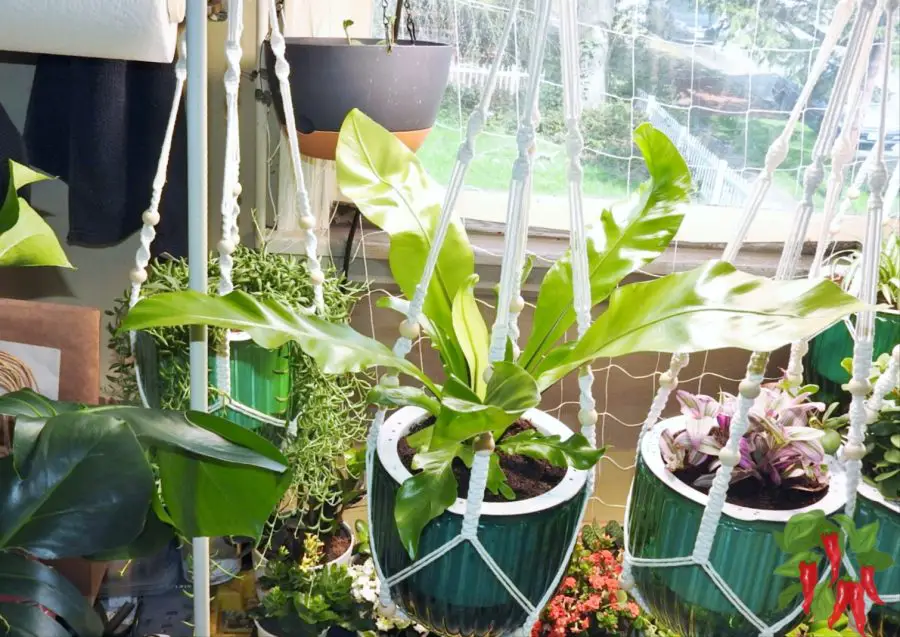
Looking for a plant that’s both beautiful and easy to care for? The Japanese Bird’s Nest Fern checks all the right boxes.
I just added one to my collection—gifted by a friend—and I’ve already got it settled into a self-watering planter.
In this post, I’ll walk you through what makes this fern different, how I potted it, and why it’s such a solid pick for your indoor jungle.
Japanese Bird’s Nest Fern Care Key Takeaways
- Japanese Bird’s Nest Fern Care is all about balance—bright, indirect light, high humidity, and evenly moist soil.
- This fern prefers a warm, draft-free spot and thrives in bathrooms or near humidifiers.
- Use a self-watering planter to help regulate moisture.
- With minimal effort, you’ll enjoy upright, wavy fronds that bring tropical charm to any space.
🪺 Japanese Bird’s Nest Fern Care – Using Self-Watering Planters
Japanese Bird’s Nest Fern Care might sound tricky at first, especially if you’ve struggled with ferns in the past.
It’s easy to overwater or miss the humidity sweet spot, and that can make things frustrating.
But once you know what this plant likes, it’s actually one of the easiest and most rewarding ferns you can grow indoors.
🌿 Introduction: Meet the Japanese Bird’s Nest Fern
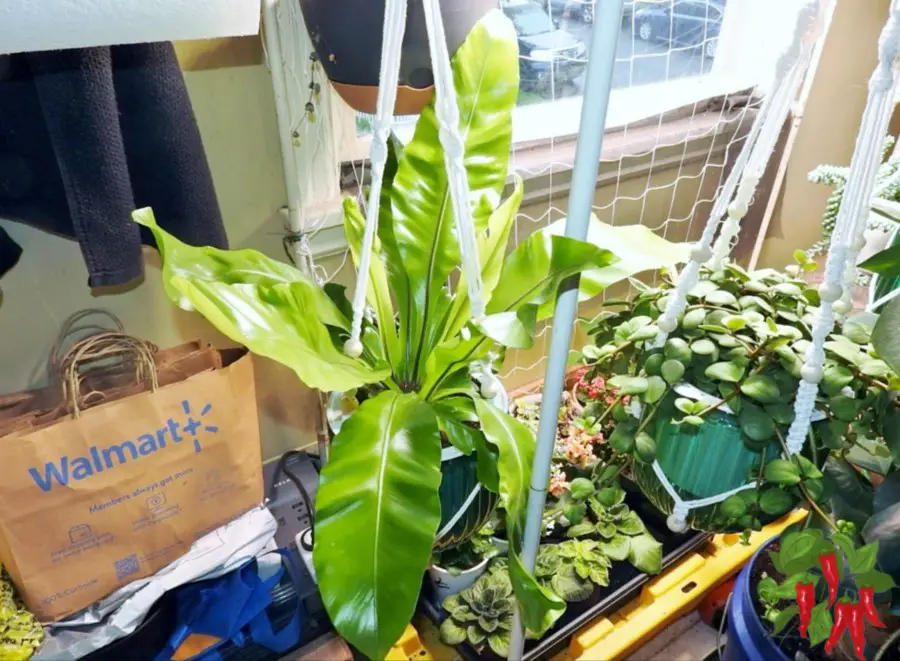
I got this plant as a gift from a friend, and right away, I knew it was something special.
It’s a Japanese Bird’s Nest Fern Asplenium antiquum and if you’ve never seen one up close, it’s got these glossy, upright fronds that ripple like waves and grow in a neat little rosette.
What really sets it apart is how compact and sculptural it looks compared to its cousin, Asplenium nidus.
A lot of folks mix them up, but once you know the difference, it’s easy to spot. This one’s a keeper.
Asplenium antiquum vs Asplenium nidus
Asplenium antiquum: Known as the Japanese bird’s nest fern, it has flat, shiny fronds with decorative wavy edges. The fronds grow in an upright rosette form, resembling a bird’s nest. It thrives in high humidity and indirect light.
Asplenium nidus: Commonly referred to as the bird’s nest fern, it has broader, lance-shaped fronds that sometimes develop gentle ripples. It prefers medium to bright indirect light and moist, well-drained soil
| Trait | Asplenium antiquum | Asplenium nidus |
|---|---|---|
| Frond Shape | Thinner, wavy edges | Broader, smooth or rippled |
| Growth Habit | Upright and compact | Flowing and relaxed |
| Texture | Slightly firmer | Softer and smoother |
🛒 Ready To Bring One Home?
Ready to bring home a plant that’s low-maintenance, pet-safe, and full of personality?
The Japanese Bird’s Nest Fern is a perfect choice. Give it the right light, keep that humidity up, and it’ll reward you with glossy, upright fronds that brighten any space. 🌿 Add one to your plant family today—you won’t regret it!

BubbleBlooms Bird’s Nest Fern, Crissie, Asplenium antiquum, epiphytic Fern in a 4 inch Pot
🌱 What Makes the Japanese Bird’s Nest Fern Unique
🌿 Glossy Fronds with a Twist
The fronds on a Japanese Bird’s Nest Fern aren’t just shiny, they’ve got character. Many grow with natural waves, and some even curl or fork at the tips.
If yours does that, it might be a variety called ‘Chrissy’, known for its decorative ends.
🪺 That Classic Bird’s Nest Shape
Look down into the center and you’ll see where the name comes from. The leaves grow out from a central rosette, forming a little bowl or nest that gives the whole plant its sculptural shape.
It almost looks like a spot a bird might actually settle into.
📏 Smaller, Neater, and More Upright
Unlike Asplenium nidus, which has broad, arching fronds that spill outward, Asplenium antiquum is more upright and compact.
Its growth stays tidy and vertical, making it a great fit for tight spaces or for adding a structured pop of green to your setup.
Why It’s Called a Bird’s Nest Fern
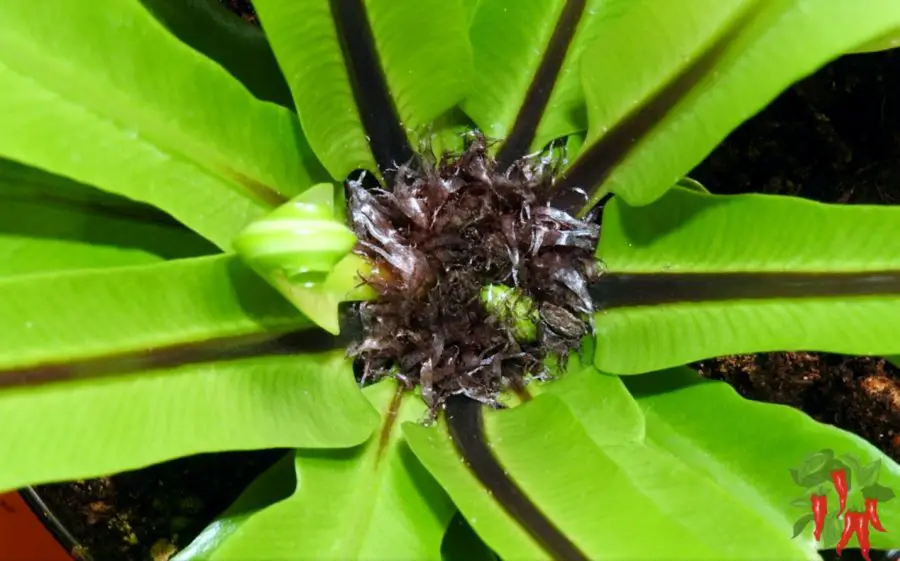
Here you can see the bird’s nest and it even looks like it has a chick in it.
📦 Unboxing the Self-Watering Planter
🏷️ The Planter I’m Using
For this plant, I went with the Melphoe 8.3″ self-watering planter I found on Amazon. It’s a nice size for a Japanese Bird’s Nest Fern and has a smart design that keeps watering simple and low-maintenance.
🧺 What’s Inside the Box
Here’s what you get when you open it up:
- Inner basket – where the soil and plant go
- Two large holes – for inserting the wicks
- Wick system – pulls water from the reservoir below up into the soil
- Outer pot – holds the water at the base
🪢 Hanging Options: Wire vs. Macramé
The planter comes with two hanging options: a basic wire hanger and a macramé hanger. I go for the macramé every time—it just looks better, adds some texture, and gives you more flexibility for where and how you hang the plant.
Plus, the macramé gives it that extra touch of style while still being sturdy. Win-win.

Melphoe Self Watering Hanging Planters for Indoor Plants, 1 Pack 8.3 Inch Outdoor Hanging Plant Pot Basket, 2 Kinds of Hangers Macrame 35.5’’ & Metal Chain 19.6’’ for Garden Home Decor
🪴 How to Pot a Fern in a Self-Watering Planter
🔄 Step-by-Step Setup
Getting your self-watering planter set up the right way makes all the difference. Here’s how to pot your Japanese Bird’s Nest Fern for steady, consistent moisture:
- Insert the wicks – Start by threading the wicks through the large holes in the bottom of the inner basket. Make sure they hang down into the reservoir area.
- Add your plant and soil – Place your fern into the inner basket and fill around the roots with potting mix.
- Moisten the soil – If the soil feels dry, give it a good watering from the top to get it evenly moist. This helps activate the wicking system.
- Fill the reservoir – Pour water into the outer pot until it reaches the fill line. The wicks will start drawing up moisture to keep the soil just right.
💧 Why Moist Soil Matters
Dry soil can block the wicking action. Moistening it at the start helps the water move upward from the reservoir, keeping your plant hydrated without guesswork.
👀 What to Look For
Once everything’s in place, check for:
- Moist, settled soil around the plant
- Water in the bottom reservoir
- Wicks hanging properly into the water
That’s it—you’re set up for easy, hands-off watering!
Japanese Bird’s Nest Fern Plant Care Reference Guide
| Characteristic | Details |
|---|---|
| Common Name | Japanese Bird’s Nest Fern |
| Botanical Name | Asplenium antiquum |
| Native Habitat | Japan, Taiwan, Southeast Asia |
| Plant Type | Evergreen, Epiphytic Fern |
| Growth Pattern | Rosette of upright, wavy fronds |
| Mature Size | 12–24 inches tall and wide |
| Watering | Keep soil consistently moist but not soggy |
| Light/Sun Exposure | Bright, indirect light |
| Soil Type | Well-draining mix with coco coir and perlite |
| Soil pH | Slightly acidic to neutral (5.5–7.0) |
| Temperature | 60–80°F (15–27°C) |
| Humidity | High; prefers 60% or higher |
| Bloom Time & Flower Color | Non-flowering; reproduces by spores |
| Potential Problems | Brown tips, yellowing fronds, spider mites, scale |
| Repotting | Every 2–3 years or when rootbound |
| Hardiness Zones (USDA) | 10–11 (outdoors); commonly grown indoors |

🌿 Japanese Bird’s Nest Fern Basic Care
Taking care of a Japanese Bird’s Nest Fern is pretty simple once you know what it likes. Give it the right conditions, and it’ll thrive with minimal fuss.
☀️ Light
This fern loves bright, indirect light. Think of a spot near an east or north-facing window—lots of light, but no harsh sun. Direct sunlight can scorch the fronds, so filtered light is the way to go.
💦 Humidity
High humidity is a must. Bathrooms with a window are perfect, or you can use a humidifier nearby. You can also mist the leaves or place it on a pebble tray to boost moisture in the air.
💧 Water
Keep the soil evenly moist, but not soggy. The roots don’t like sitting in water, so good drainage is key. If you’re using a self-watering planter, you’re already ahead of the game.
🌱 Feeding
Go light on the fertilizer. Use a diluted, balanced liquid feed once a month during spring and summer. Skip it in winter when the plant slows down.
🌡️ Temperature
Keep your fern away from cold drafts, heating vents, and air conditioning. It prefers a steady, warm environment—around 60–80°F (15–27°C) is ideal.
With these basics down, your fern will be happy, healthy, and full of lush, green life.
🌱 Propagation: What You Can (and Can’t) Do
If you’re hoping to multiply your Japanese Bird’s Nest Fern, you might want to set your expectations low—it’s not the easiest plant to propagate.
❌ Why Division Doesn’t Work
This fern grows from a single crown, which means you can’t just split it like you would with a peace lily or snake plant. Trying to divide it can damage the whole plant, so it’s not recommended.
🟤 Spores: Nature’s Way, But Not Beginner-Friendly
Japanese Bird’s Nest Ferns reproduce by spores, which form on the undersides of mature fronds. Propagating from spores is possible, but it’s a long, slow process that takes sterile conditions and a whole lot of patience.
🌱 Pups—A Rare Bonus
Every now and then, a healthy, mature fern might surprise you with a small pup growing near the base. If it develops its own roots, you can gently separate it and pot it up. It’s rare, but when it happens, it feels like a little gift from the plant.
So while it’s not the best plant for propagation projects, it makes up for it by being stunning, compact, and super easy to care for.
📏 Size, Shape, and Growth Habit
The Japanese Bird’s Nest Fern is perfect if you want something lush but not oversized. It typically grows up to 2 feet tall and wide, which makes it easy to manage in just about any indoor space.
⬆️ Upright and Sculptural
Unlike Asplenium nidus, which tends to sprawl outward with wide, floppy fronds, Asplenium antiquum grows in a more upright and compact form. The fronds rise from the center in a tidy rosette, giving it a clean, sculptural look.
🪴 Ideal for Small Spaces
Because it stays neat and vertical, this fern is a great choice for:
- Small apartments or shelves
- Bathrooms with bright, filtered light
- Macramé or hanging planters where you want a pop of green without the bulk
It’s a plant that plays well with others—and never takes up more space than it needs.
🐾 Pet Safe Bonus
Got curious pets or little ones running around? Good news—the Japanese Bird’s Nest Fern is non-toxic to both cats and dogs. Even if your furry friend decides to sneak a nibble, there’s no need to panic.
🏡 A Worry-Free Plant for Any Home
This makes it a perfect choice for pet-friendly households or anyone with small kids who like to explore. It’s just one more reason to love this fern—safe, stylish, and super easy to live with.
🌿 Japanese Bird’s Nest Fern Final Thoughts: Easy, Beautiful, and Worth Growing
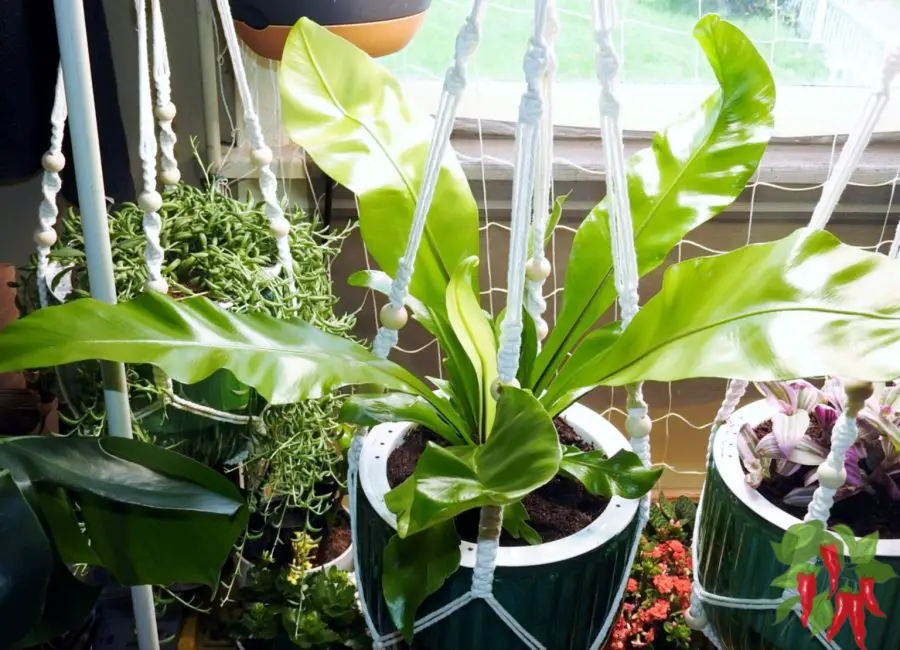
If you’re looking for a houseplant that brings beauty without the fuss, the Japanese Bird’s Nest Fern is a fantastic pick. It’s compact, pet-safe, and has those glossy, upright fronds that always look fresh.
🌱 My Experience Growing It
So far, mine’s been a total joy to grow, especially in a self-watering planter. It’s low-maintenance, easy to style, and thrives with just a little attention to light and humidity.
🌟 Why You Should Try One
If you haven’t tried one yet, I definitely recommend it. This plant adds a lush, tropical vibe to any room, and once it settles in, it just keeps looking better.
Take good care of yourselves. Happy gardening. Don’t forget, stay green.
🛒 Ready To Bring One Home?
Ready to bring home a plant that’s low-maintenance, pet-safe, and full of personality? The Japanese Bird’s Nest Fern is a perfect choice.
Give it the right light, keep that humidity up, and it’ll reward you with glossy, upright fronds that brighten any space. 🌿 Add one to your plant family today—you won’t regret it!

Crissie Fern Plant – Asplenium antiquum ‘Crissie’ (4″ Grower Pot) – Tropical Houseplant – Easy to Grow Houseplant – Air-Purifying Houseplant for Home Office Decoration
Read More:
Indoor Apartment Gardening: 15 Point Comprehensive Guide
Visit my Amazon Influencer Page for videos and gardening products
Grow Your Own Garden
Visit my Amazon Influencer Page for videos and gardening products Grow Your Own Garden





